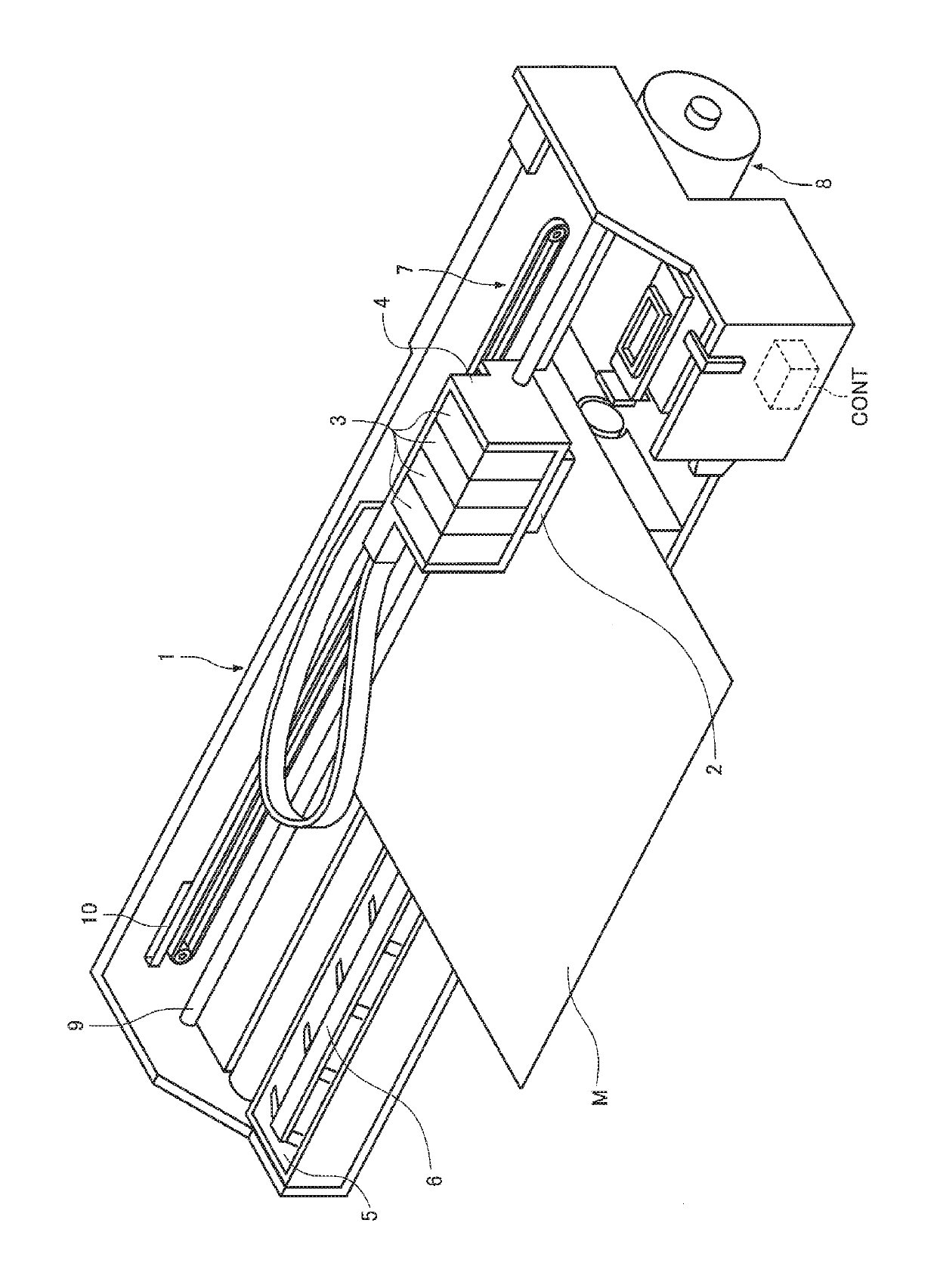Textile printing method
a printing method and printing technology, applied in the direction of dyeing process, textiles and paper, printing, etc., can solve the problems of difficult fixation of resin to polyester, insufficient permeation of ink into cloth, and insufficient fastness to wash or rub printed images on cloth, etc., to achieve stably eject the ink composition and high fastness
- Summary
- Abstract
- Description
- Claims
- Application Information
AI Technical Summary
Benefits of technology
Problems solved by technology
Method used
Image
Examples
Embodiment Construction
[0036]Some embodiments of the invention will now be described. The following embodiments will be described by way of example. The invention is not limited to the following embodiments, and various modifications may be made within the scope and spirit of the invention. Not all the components disclosed in the following embodiments are required for the invention.
1. Textile Printing Method
[0037]The textile printing method according to an embodiment of the invention includes heating a cloth, and applying an ink composition onto the heated cloth by ejecting the ink composition from an ink jet head. The ink composition contains resin fine particles and has a viscosity of 4.5 mPa·s or less at 40° C. and a surface tension of 28 mN / m or less at 40° C. Also, the textile printing apparatus according to an embodiment of the invention is configured to perform the textile printing method.
[0038]Before describing the process steps of the textile printing method in detail, the structure of the textil...
PUM
| Property | Measurement | Unit |
|---|---|---|
| temperature | aaaaa | aaaaa |
| temperature | aaaaa | aaaaa |
| surface tension | aaaaa | aaaaa |
Abstract
Description
Claims
Application Information
 Login to View More
Login to View More - R&D
- Intellectual Property
- Life Sciences
- Materials
- Tech Scout
- Unparalleled Data Quality
- Higher Quality Content
- 60% Fewer Hallucinations
Browse by: Latest US Patents, China's latest patents, Technical Efficacy Thesaurus, Application Domain, Technology Topic, Popular Technical Reports.
© 2025 PatSnap. All rights reserved.Legal|Privacy policy|Modern Slavery Act Transparency Statement|Sitemap|About US| Contact US: help@patsnap.com

